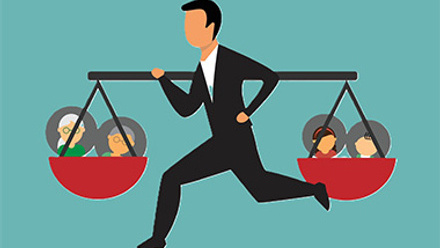How a mental health strategy that gets people moving can help beat burnout
This year, the Mental Health Awareness Week campaign (13-19 May) focuses on the importance of movement for mental health.
Human minds and bodies are connected, and movement, especially that which gets our endorphins flowing, is a mental health booster and should form part of your stress-preventing, proactive mental health strategy.
Pluxee UK’s Guide to Recognising and Resolving Employee Burnout includes a self-assessment checklist to help spot signs of burnout in yourselves and others.
There are five stages to reaching burnout, and early intervention is vital.
Tackling excess stress
There are differences in the effect of workplace stress across industries, age, and gender. Education and awareness are essential to your strategy, allowing you to make changes that meet the varying needs of your employees.
Having an EAP service is quickly becoming a hygiene factor. But they don’t work unless embedded within the business culture. It’s essential to educate employees on how to use it, how it can help and regularly remind them that it’s there to support them.
Creating the culture
Employee wellbeing benefits must do more than tick a box. An EAP is an invaluable resource, but for it to be effective, it must be embedded within your culture.
Pluxee UK’s podcast with EAP provider Care First explores how to break down the barriers to effective mental health support. During the podcast, it shares examples of where its EAP service was effectively used in combination with data and key learnings to reduce stress-related absenteeism and burnout.
Start the mental health conversation and keep it going. Break down the stigma, making conversations about mental, physical and financial wellbeing the norm. Open the door and invite people in, creating safe, confidential spaces for meaningful conversations.
Keep on moving
As the MHAW campaign says, movement is important to reducing stress and boosting mental health. There’s a cultural element, too.
If employees feel too busy to pause for a break that they’re legally entitled to and enhances their mental and physical wellbeing, that is a red flag.
Many employees watch their senior leaders and managers; they mirror their behaviour, so managers must recognise the importance of leading by example. Lunch breaks are a time for employees to recharge, and powering through on a regular basis is a fast road to burnout.
Managers can encourage movement in other ways, such as meetings on the go and walking one-to-one, but the easiest way is to ensure employees take the breaks their minds and bodies need.
Make exercise affordable
A gym membership helps employees stay fit and healthy, providing a place where employees can destress and wind down at the end of a busy day or start their day by getting those endorphins flowing.
Whatever their preferences, many UK workers have cancelled gym membership to save money during the cost-of-living crisis. Build discounted gym memberships into your mental health strategy to give your employees the outlet they need.
Easing the financial burden
MHAW week focuses on movement, but don’t ignore the role financial worry plays in increasing employee stress levels. Discover what support employees seek in Pluxee UK’s Money Mastery research.
Create a supportive culture, encourage positive behaviours, embed mental, physical, and financial benefits into your preventative mental health strategy and watch your employees and business thrive.
Supplied by REBA Associate Member, Pluxee UK
Pluxee UK, is a leading employee benefits and engagement partner that opens up a world of opportunities to help people enjoy more of what really matters in their lives.








